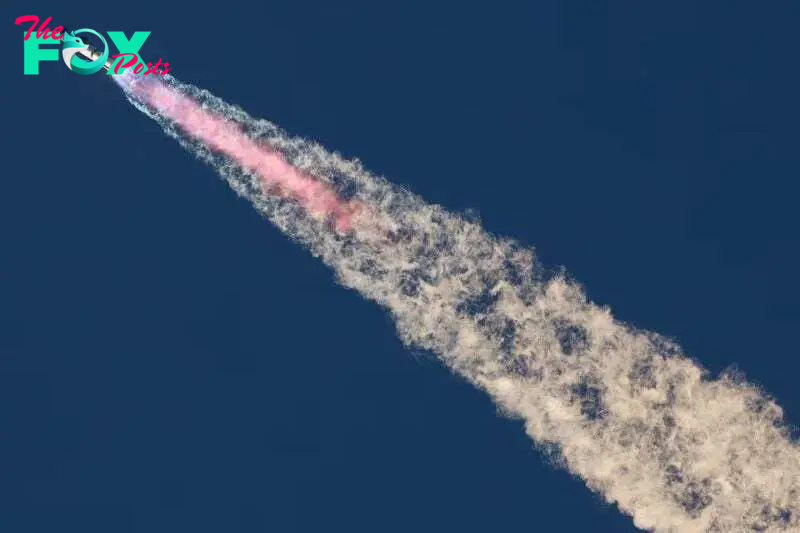Technology
SpaceX's catch-landing method marks milestone in reusable rocket development for moon, Mars missions
SpaceX in its fifth Starship test flight on Sunday returned the rocket's towering first stage booster back to its Texas launch pad for the first time using giant mechanical arms, achieving another novel engineering feat in the company's push to build a reusable moon and Mars vehicle.
The rocket's first stage "Super Heavy" booster lifted off at 7:25 a.m. CT (1225 GMT) from SpaceX's Boca Chica, Texas launch facilities, sending the Starship second stage rocket toward space before separating at an altitude of roughly 70 km (40 miles) to begin its return to land - the most daring part of the test flight.
The Super Heavy booster re-lit three of its 33 Raptor engines to slow its speedy descent back to SpaceX's launch site, as it targeted the launch pad and tower it had blasted off from. The tower, taller than the Statue of Liberty at over 400 feet, is fitted with two large metal arms at the top.
With its engines roaring, the 233 foot (71 metres)-tall Super Heavy booster fell into the launch tower's enclosing arms, hooking itself in place by tiny, protruding bars under the four forward grid fins it had used to steer itself through the air.
"The tower has caught the rocket!!" CEO Elon Musk wrote on X after the catch attempt. SpaceX engineers watching the company's live stream roared in applause.

The novel catch-landing method marked the latest advance in SpaceX's test-to-failure development campaign for a fully reusable rocket designed to loft more cargo into orbit, ferry humans to the moon for NASA and eventually reach Mars - the ultimate destination envisioned by Musk.
Meanwhile Starship, the rocket system's second stage or top half, cruised at roughly 17,000 miles per hour 89 miles up in space, heading for the Indian Ocean near western Australia to demonstrate about 90 minutes into flight a controlled splashdown.
As Starship reentered Earth's atmosphere horizontally, onboard cameras showed a smooth, pinkish-purple hue of superhot plasma blanketing the ship's Earth-facing side and its two steering flaps, intense hypersonic friction displayed in a glowing aura.
-

 Technology4h ago
Technology4h agoWhy a Technocracy Fails Young People
-

 Technology16h ago
Technology16h agoTransplanting insulin-making cells to treat Type 1 diabetes is challenging − but stem cells offer a potential improvement
-

 Technology21h ago
Technology21h agoShould I worry about mold growing in my home?
-

 Technology21h ago
Technology21h agoBlurry, morphing and surreal – a new AI aesthetic is emerging in film
-

 Technology1d ago
Technology1d agoSpaceX’s Starship advances in spaceflight despite booster landing failure | The Express Tribune
-

 Technology1d ago
Technology1d agoGreat Barrier Reef faces 'significant coral deaths' following recent climate events | The Express Tribune
-

 Technology1d ago
Technology1d agoMeta to challenge India's data-sharing restrictions between WhatsApp, other apps | The Express Tribune
-

 Technology1d ago
Technology1d agoMerlin inks £85m deal to bring Minecraft attractions to UK, US parks by 2026-2027 | The Express Tribune



















